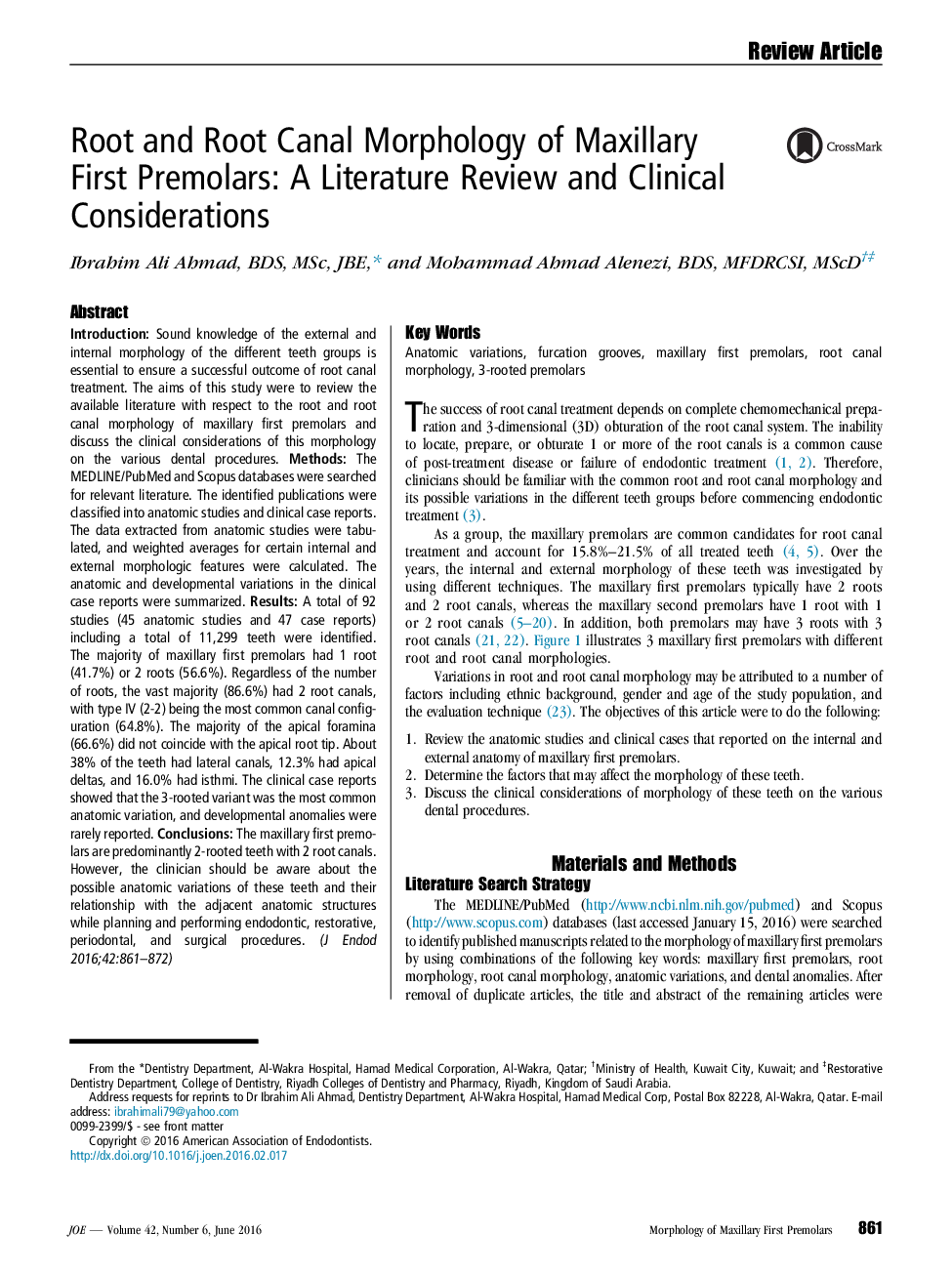| کد مقاله | کد نشریه | سال انتشار | مقاله انگلیسی | نسخه تمام متن |
|---|---|---|---|---|
| 3146503 | 1197289 | 2016 | 12 صفحه PDF | دانلود رایگان |
• The maxillary first premolars are predominantly 2-rooted teeth with 2 root canals.
• The presence of a third root is the most common anatomic variation in these teeth.
• The clinician should have sound knowledge about the internal and external morphology of maxillary first premolars and their relationship with adjacent anatomic structures to improve the treatment outcome of surgical and nonsurgical dental procedures.
IntroductionSound knowledge of the external and internal morphology of the different teeth groups is essential to ensure a successful outcome of root canal treatment. The aims of this study were to review the available literature with respect to the root and root canal morphology of maxillary first premolars and discuss the clinical considerations of this morphology on the various dental procedures.MethodsThe MEDLINE/PubMed and Scopus databases were searched for relevant literature. The identified publications were classified into anatomic studies and clinical case reports. The data extracted from anatomic studies were tabulated, and weighted averages for certain internal and external morphologic features were calculated. The anatomic and developmental variations in the clinical case reports were summarized.ResultsA total of 92 studies (45 anatomic studies and 47 case reports) including a total of 11,299 teeth were identified. The majority of maxillary first premolars had 1 root (41.7%) or 2 roots (56.6%). Regardless of the number of roots, the vast majority (86.6%) had 2 root canals, with type IV (2-2) being the most common canal configuration (64.8%). The majority of the apical foramina (66.6%) did not coincide with the apical root tip. About 38% of the teeth had lateral canals, 12.3% had apical deltas, and 16.0% had isthmi. The clinical case reports showed that the 3-rooted variant was the most common anatomic variation, and developmental anomalies were rarely reported.ConclusionsThe maxillary first premolars are predominantly 2-rooted teeth with 2 root canals. However, the clinician should be aware about the possible anatomic variations of these teeth and their relationship with the adjacent anatomic structures while planning and performing endodontic, restorative, periodontal, and surgical procedures.
Journal: Journal of Endodontics - Volume 42, Issue 6, June 2016, Pages 861–872
